California legislation necessary for interior design field or too restrictive/impractical?
Cathy Lara
12 years ago
What are your thoughts on proposed legislation in California (AB 2482), which would require a license to practice interior design, require an interior design degree or certificate from a 2 or 4 year college in order to be eligible to become licensed, and would make practicing without a license a criminal offense, among other things?
Yes, absolutely. All designers should be licensed.
I'd like some certification, but this is too restrictive.
No license required, just talent and experience.
Featured Answer
Sort by:Oldest
Comments (95)
mikedudek
12 years agolast modified: 12 years agoInterior Designers who have proven their baseline competence via examination and experience to practice as peers with, or independent of, other licensed building design professionals within code based construction environments should have that right.
Those interior designers who choose not to- do not have to. If you choose not to become a "licensed" interior designer then you are free to do so and you are free to practice as an "interior designer"- you have no dog in this hunt. Regulated interior design has nothing to do with talent or flair. Regulated interior design is not an art and is practiced only in code based construction environments- which very rarely are residential.
This is not about distinguishing between interior designer wanna be's and the innately qualified. It is a right to practice issue for those who have voluntarily proven their baseline competence to do so- nothing more nothing less.Kathryn Peltier Design
12 years agoMikedudek, I think you have hit the nail on the head when you say "Regulated interior design has nothing to do with talent or flair. Regulated interior design is not an art and is practiced only in code based construction environments- which very rarely are residential." You have separated the aesthetics of the situation from the practical and legal side of the situation. As to your comment, Oasis, I get what you are saying, and that is why I am somewhat on the fence about government licensing. That being said, even in a residential environment, I think that there should be some minimum standard of knowledge for anyone who calls themselves an interior designer and is going to lead a project where anything more than furniture, accessories and some finishes are being selected. As you say, even if you are hiring an expert in one area, I think the lead designer should have an understanding of what is going on. I don't think it's fair to lay the entire burden on the homeowner, either, to vet the "designer", or to suggest that they can sue afterwards if something goes wrong. No, they should have some assurance from the get-go that a "designer" knows what they are doing. Aesthetics boil down to a personal choice. All this being said, I don't know exactly how to accomplish this competancy distinction. Hence, the 40-year Catch-22, I guess.Related Professionals
Arlington General Contractors · Aurora General Contractors · Fort Pierce General Contractors · Leon Valley General Contractors · Martinsville General Contractors · Plano General Contractors · Troutdale General Contractors · Huntington Station Flooring Contractors · Kent Flooring Contractors · Nashville Flooring Contractors · River Edge Flooring Contractors · Seekonk Flooring Contractors · Strongsville Flooring Contractors · Temecula Flooring Contractors · Waterbury Flooring Contractorsmikedudek
12 years agolast modified: 12 years agoOasis it is all about the ability of licensed interior designers (or architects or engineers) to be able to obtain a building permit (within size & scope limits of course) for thier work. Will licensed interior designers have to hire other licensed professionals if the need arises? Of course. But should a qualified/vetted interior designer who wants to remodel a 6,000 square foot country club (with out affecting structure or occupant loads) be required to surrender the rights to their project just because the local code officials require a set of drawings that are signed and sealed by a "licensed" design profession? Of course the AIA is going to say "Yes". However we qualifed/vetted interior designers have a problem with that. We should not have to surrender the intellectual rights and the legal liabilities associated with our work just because the laws say only architects (or engineers) can do that.
That is the restriction here- not some designer wannabe that feels threatened by other designers who wish to practice at the highest level of the regulated building design profession and are willing to pay for it and prove it.
Is it "impractical"? Guess it depends on your definition of practical.Kathryn Peltier Design
12 years agoMikedudek - thank you for the explanation of this proposed law. It certainly clarifies what this CA proposal is all about.drdfox2
12 years agoThere is usually more to the story than the media tells but people will hire whoever they please to design their interiors, licensed or not. No law can regulate that.Landa Design
12 years agothis has been some of the best conversation about a very important issue that I have seen in a very long time. It has not changed my mind that interior design professionals need to be licensed. Call yourself a decorator if that is what you do, but not a designer. I just hope in another 30 years, this conversation is still going on.mikedudek
12 years agoSo drdfox2 if there is "more to the story than the media tells people" how did you come to such a steadfast conclusion?
The moral of that rhetorical question is that the general public does not have a clue what a "professional" trained and tested interior designer is, or does. And even if they wanted to understand the full story there are no resources to inform them. Nor are there any substantive public relations efforts on the part of our professional organizations to counter the mass misinformation campaign that impugns our efforts to become peers with other licensed design professionals.
That is not to say that there are not a whole lot of "professional" interior designers out there who are trying. It is to say that if we do not properly communicate our unique value to society and that we cannot prove our ability to protect the health, safety and welfare of the public as they live work and play in OUR spaces, then we doomed to another 30+ years of this conversation and many others like it.
That is just plain sad.cjbirk
12 years agoPlease put me out of my misery if this conversation continues another 20-40 years. It is time to settle the question, simply allow the qualified to be licensed, and the others to continue to call themselves whatever they want ( free speech issues). Just let the public know which is which- like the CPA vs the book-keeper, the nurse vs. the Registered Nurse, even the architect vs. the RA ( Registered Architect). And please, let's get the major design associations hold hands and merge, and then get them to finally do a PR campaign which touts our value to society ( yes, we do provide a value). I must be dreaming....christinewalker
12 years agolast modified: 12 years agoBack to the original question on proposed AB 2482 in Calif. It is not needed because there already is a voluntary (non taxpayer funded) legal title "Certified Interior Designer". CIDs in California have education, experience and are tested on building codes, business practices, ethics, design, etc.
For the past 20 years, CIDs have been defined in state CBPC 5800 as qualified to work with building, life-safety, flammability and disabled access code issues for interior spaces.
If you want to be Certified, great. Go through the process. If you want to decorate or design without certification, fine, do that. The state won't stop you but at least the consumer does have a choice.
Go to http://www.CCIDC.org for more information on certification.Aragon Interior Design
12 years agoI'm sorry but talent and experience doesn't teach the professional anything about health, safety and welfare nor does it protect the consumer. Talent doesn't provide knowledge of slip resistant coeffients. flame spread rates, accessibility requirements or chapter 8 in the building code called interior finishes. When interior designers are responsible for creating the built environment in which you spend 99% of your time, wouldn't you want them to have a background of more than just talent?mikedudek
12 years ago@christinewalker
If the CCIDC voluntary certification program provides the same level of practice/permitting rights as state regulated/licensed building design professions then please verify that because if it does this discussion is moot and all ID professionals across the entire nation need to follow your model. I would be the first to call it a revolutionary paradigm shift.
The reason the evil ASID cartel keeps introducing legislation to have Sacramento license the practice of Interior Design is because it doesn't.
None of us are in this to create more bureauacracy and government regulation particularly where an effective self-regulation program is already in place. However in the absence of legislation that provides for our right to practice on a fair and level playing field, legally and politically, we will do what we can to make that happen.Landa Design
12 years agoThe evil ASID does not and cannot introduce licensinig in any state since it is not an entity of that state. ASID can and does support the wishes of its members in the states where licensing is proposed for/against the interior design profession or ASID members. ASID is only an organization not a lobbying agency. Any in-state lobbyist must be hired by a state coalition for/against proposed legislation.
What is most interesting about this conversation, and the way it has grown, is the un-truths that are arising. Not picking on you Mike, but collectively as people have entered comments. As with any political issue, the pot is being stirred and this conversation needs to be held. Too bad more people are not partaking in the conversation or interested in their future livlihood.mikedudek
12 years agoI fully understand ASID's position and role in the ID regulatory effort. I was being somewhat facetious and sarcastic in that comment. However we all know who is pulling the ID coalitions strings.christinewalker
12 years agolast modified: 12 years ago@mikedudek:
I don't think that anyone in these discussions understands the difference between "the right" to submit and being turned down.
I mean ... Anyone off the street has "the right" to walk into a building department and submit their plans. Now, whether they'll get a permit is 100% up to the building official - and that is true for architects, engineers and interior designers in every state.
If you (or anyone else) can prove otherwise, that there is a law somewhere that forces building officials to always give permits to architects, engineers and interior designers, please tell me where to find it !
With regard to AB 2482, where in this proposed bill does it guarantee Registered Interior Designers the right to submit or the right to a permit?
@Landa Design - ASID National is the mover and shaker behind all state licensing efforts and their chapters and members must follow in lockstep with National. An individual chapter cannot think for itself or go against national policy and that is why ASID chapters dropped out of the original California coalition, CLCID (they were forced to). True, ASID National does not appear, on the surface, as a state coalition, but they are the big stick behind every state coalition for a license with NCIDQ only as the exam.mikedudek
12 years agoWell of course the local code officials can deny a permit to President Obama...but without legal recognition as a licensed design professional the chances of a non-licensed interior designer is totally subject to interpretation of local officials. Licensure removes, or at least diminishes, the chances for out right denial.
As far as I know the D.C., Louisiana, Nevada and Georgia have permit statutes that allow licensed ID'ers to submit and pull permits via their own work. I am fairly certain there are others but the nuances in each jurisdiction would take more time and space than I am willing to waste. If you really want to get into a legal review of AB 2482 please call me at 785-532-1324. I would rather not put others to sleep with that discussion.christinewalker
12 years agolast modified: 12 years ago@mikedudek - - -
Okay, let's put these "permit statute" MYTHS to rest, once and for all.
NO WHERE in Louisiana Int. Des. law allows licensed ID'ers to submit and pull permits.
Read the law for yourself: http://www.lsbid.org/laws.pdf
SAME for Nevada
http://www.leg.state.nv.us/NRS/NRS-623.html
SAME for Georgia
http://sos.georgia.gov/acrobat/PLB/laws/23_Architects_And_Interior_Designers_43-4.pdf
SAME for Wash. DC
http://www.asisvcs.com/publications/pdf/660949.pdf
AND, there are no other states either, Mike. You want to talk about a waste of time? Correcting you, on what you should know already. Re a "legal review" of AB 2482, RU kidding me? I read it more than once- all the way through - and it has some of the worst and most restrictive language I have ever read in a proposed law. No thank you on talking with you on this particular bill. It stinks all the way to Mars and back. What's to discuss? :)mikedudek
12 years agolast modified: 12 years agoHey Christine did you pull that red herring out of the IDPC play book?
The state boards administrate the licenses- they rarely deal with "permits" as that is the call of the local jurisdictions. However since most building departments require documents to be signed and sealed by a licensed building professional or RA or PE (there are as many peculiarities with this requirement as there are local codes and ordinances) the stated boards define who can sign and seal documents. But just for giggles I went down your rabbit hole and discovered this about several of your myth busters:
From the Nevada Administrative Code-
“NAC 623.763 Validation and use of stamp or seal; responsibility of registrant. (NRS 623.140, 623.185)
1. Each registrant shall validate a stamp or seal either manually or electronically. The seal, signature and date must produce a clearly visible and legible image on any copy or reproduction of the document to which they are affixed.
2. When a registrant signs, stamps or seals a document containing the work of others, the registrant represents that the entire document has been prepared by him or her or prepared under his or her responsible control, unless the registrant includes a written statement adjacent to his or her signature, stamp or seal identifying the portion of the document that was prepared by him or her or prepared under his or her responsible control.
3. A registrant who signs, stamps or seals a document which was not prepared by him or her but was prepared under his or her responsible control is subject to disciplinary proceedings pursuant to chapter 623 of NRS for any errors in that document as if the document was prepared by him or her.
4. For the purposes of NRS 623.185, plans, specifications, reports and any other documents which are issued by a registrant with the intent that they be considered as formal or final documents must be stamped with the seal of the registrant before they are delivered to or filed with any public authority.
5. A registrant is not required to stamp the following documents:
(a) An as-built plan or record plan;
(b) A report that includes observations concerning the progress of the construction of a project; or
(c) An estimate of the costs of a project.
(Added to NAC by Bd. of Architecture, Interior Design & Residential Design by R113-99, eff. 12-4-2000; A by R120-01, 3-4-2002; R012-06, 5-4-2006)
NAC 623.766 Contents of plans, specifications and certain other documents submitted to public authority. (NRS 623.140, 623.185)
1. Plans submitted to a public authority must include:
(a) The name, address and telephone number of the firm that submits the plans;
(b) The name and location of the project for which the plans are submitted;
(c) The date the plans were issued for printing; and
(d) A statement that indicates whether the plans are preliminary or final.
2. Each sheet submitted to a public authority must bear the date, the original or electronic seal and signature of the registrant who provided the responsible control under which the work indicated on the sheet was performed.
3. Each set of specifications submitted to a public authority must include a table of contents or cover sheet that:
(a) Indicates the professional discipline that is the source of each specification; and
(b) Contains the stamp of, and is signed and dated by, each registrant who provided the responsible control under which the work in that professional discipline was performed. The seal, signature and date may be in original or electronic format.
4. Each report, study, test result, certification or calculation that is submitted to a public authority must be stamped, signed and dated by the registrant who provided the responsible control under which that report, study, test result, certification or calculation was submitted. The seal, signature and date may be in original or electronic format.
(Added to NAC by Bd. of Architecture, Interior Design & Residential Design by R113-99, eff. 12-4-2000; A by R120-01, 3-4-2002; R230-03, 4-30-2004; R012-06, 5-4-2006)
( http://www.leg.state.nv.us/NAC/NAC-623.html#NAC623Sec763 )
Your Georgia link, had you read it would have revealed this cherry;
“(8) 'Interior construction document' means detailed drawings and specifications sealed and signed by a registered interior designer certifying compliance with applicable current building codes, ordinances, laws, and regulations that define the work to be constructed in such form as is required for approval of a construction permit by a building official or
fire marshal. Such document may be combined with documents prepared under the responsible control, seal, and signature of other registered or licensed professionals.
http://sos.georgia.gov/acrobat/PLB/laws/23_Architects_And_Interior_Designers_43-4.pdf
Since Georgia is the latest state to implement ID permitting privileges I cite this gem : “Notice is hereby given that pursuant to the authority set forth below, the Georgia Board of Architects and Interior Designers, (hereinafter “Board”) proposes to adopt a rule of the Board, Rule 50-9-.07 Signing and Sealing Documents as Registered Interior Designer (hereinafter “proposed rule”).
http://sos.georgia.gov/plb/architects/Notice%20and%20SD%2050-9-.07%20July%202010.pdf
B.T.W. The rule was approved.
From Washington D.C. ;
Any interior design construction documents, including drawings, plans, specifications, or reports prepared or issued by the licensed interior designer and being filed for public record with any jurisdiction or local building department for the purposes of obtaining a building permit, shall bear the signature and seal of the licensed interior designer who prepared or approved the document and the date on which they
were sealed. The seal shall be evidence of the authenticity of the document. Interior design construction documents bearing the seal of a licensed interior designer shall be accepted for filing by the appropriate jurisdiction or local building department.
http://www.asisvcs.com/publications/pdf/660949.pdf
Why do these boards go to such great length to define ID practice, the IDseal and how to do it if there is no intention of licensed ID'ers submitting for permit? Why is that Christine?
P.S. I am still waiting for your phone call.christinewalker
12 years agoI don't know what IDPC is. After I write this, I'll look it up.
In all your excerpts, none , absolutely none of the laws, say there is a legal mandate that forces the building official to accept the drawings or forces them to issue a permit. In none of these excerpts or entire bills for that matter is a guarantee or a "right" to get a permit. This is always left up to the building official. . . and you called it very accurately when you
wrote: "there are as many peculiarities with this requirement as there are local codes and ordinances"
The fact that Certified or Registered Interior Designers are issued a stamp, yes, I agree with you, these are indicators of a higher level of professionalism but it is still up to the building official ONLY to decide in their jurisdiction whether or not they will issue a permit for that stamped set of drawings. An ID'er STILL may need an architect's stamp on their drawings (at the behest of the building official) .... and an architect STILL may need an engineer's stamp..... and guess what. If the engineer's drawings aren't quite right, they'll be kicked right back to them for fixing too.
What ticks me off is that this group in California, the idc-ca is going around telling designers (in meetings) AB 2482 will get ID plans accepted if only they had the state license and title
"Registered Interior Designer". They say RID will give them "equal access" and are also saying a designer needs to be NCIDQ to do Federal work. What a bunch o' hooey.
I really don't know why you copied & pasted all the laws.... because again, defining "who can sign and seal" a document, has ZERO to do with who can submit and get a permit. Does an interior designer with a stamp and seal have a better chance with a building official? Sure, if their plans are good. But if they're cr*p, or the designer steps into an area that is beyond nonstructural interior design, they'll get kicked right back across the counter.
I hope someone from idc-ca gets to read this: An RID will have no more power over a building official than a CID, a Calif. licensed architect or an engineer. Period. So please, idc-ca , open your eyes, and stop the lies.
It is really a darned shame that most designers sit back and let others do the thinking for them. If they got involved with the political side of their profession...sat in meetings, and thought for themselves, on what is right and wrong, our profession would evolve the way it is supposed to. You want to protect the public and do right by them. You want an opportunity to work and not have another profession or group put you out of work. Simple.mikedudek
12 years agolast modified: 12 years agoWrong-In order for anyone to have a chance at filing for and being granted a permit to build work of their own design they have to be "licensed" by the state. I won't go into the details (see above). If you are not legally recognized by the state as a licensed design professional then there is no way an interior designer can submit their work for permit- they must surrender it to another licensed professional. THAT'S IT! THAT IS THE MEAT OF THIS NUT!
No title + No license =No Permit. What part of that equation do you have a problem with?
And please don't pull out the "You're going to put me out of business because I don't want to get licensed....." argument. That dog gave up the hunt 3 years ago when the ID coalitions vis-a-vis ASID disavowed any support of legislation that infringes on the rights of interior designers to call themselves interior designers and to practice interior design. If you do not want to practice in codes based construction environments as a "registered" or "licensed" interior designer then no one is holding a gun to your head. That said there is still some lingering proposed legislation out there that may be construed, with a long legal reach, to be exclusionary of "interior design" and we all should be mindful of that (California AB2482 IS NOT ONE). But that is the great exception yet the angry interior designers seem fixated on countering efforts to advance the profession despite them. If you don't want a license don't get one. It's your free choice. But if you don't want to get a license to practice at the highest level of the profession then don't stand in the way of those that do.
If CCIDC certification allowed for the exact same recognition on a state-wide basis I am 100% certain the IDC-CA would stand down and embrace your model.
Now once again here is your chance to convince the pro-regulation contingent that CCIDC truly offers a non-governmental equivalency to state mandated practice licensure.christinewalker
12 years agolast modified: 12 years agoIf this debate was scientific, I would say you have not ultimately established your cause and effect - which, as you know, in science, there is no room for guessing. You are taking partial observations and leading to conjectures but the hard part of the job - the next final step in good (not junk) science is proving me wrong.
You cannot prove me wrong, Mike, as you do not live or practice in California (where we have a large population and daily seismic activity). Yes. You read that correctly: daily. You also apparently do not understand CID law, the CA architect's practice act exemptions on our work, nor the life-safety resolve of some of our largest and most restrictive building departments.
As all the IDC-CA fans out there (fueled by NCIDQ brainwash), you don't bother to open your eyes to reality, you just skip straight to equate state-run bureaucratic license = permit, and you discount everything else. Sure, you can say to me: "wrong", but Mike, it means nothing, especially if this was science, because you cannot prove me wrong.
CCIDC is not going backwards nor diluting professional interior design, which, as you know, is always evolving, so please, just let it do that. We Californians have enough problems - over population, floods, fires, landslides, earthquakes, hurricane force winds, and tornadoes, and never enough money for public transportation, fixing infrastructure and fighting crime. We don't need outsiders to throw stones at us too. Thank you for understanding.Landa Design
12 years agoThere needs to be about 1,000 more people reading this discourse. It is a great debate/conversation. I live in Texas but am a professional interior designer and when I saw this on houzz I had to contribute. Texas was very restrictive about who could call him/herself an interior designer. Someone sued and now anyone can call him/herself an interior designer. so the profession has been diluted again. The public has no idea who/what they are getting. About half of the iders in the US who call themselves had no educational or formal training or background, but thought it would be a fun way to make a living. When I was in Chicago with a showroom at the Merchandise Mart it was not unusual for someone to come in with a resale/business lisence to purchase good for her home so she would not have to pay sales tax or hire a professional designer to purchase from.
I have been involved with licensing in three states, Georgia, Indiana and Illinois. Of the 20 or so states that have ID licensing/registration requirements there are conflicting laws. It is not like law or architecture where one exam pretty much fits all states. And yes, I think we will be having this discussion in another 20 years or so because of the resistance for professionals to grow up, see the need for elevating the profession and agree to pass licensing laws and not just call trained/professional interior designers decorators.
How much flack can I catch for all of that. CA has had a certification program, now it is attempting to raise the bar. CA is thought of as a leader of a state.christinewalker
12 years agolast modified: 12 years agoThis IS a good discussion and I, too, believe the public needs to know if their designer or decorator has some credentials, business ethics, talent, and the smarts to know what they can and cannot do, and always, they must have an eye out for health, safety and welfare.
Where ASID went wrong, (and their stance now too, keeps evolving), is when they supported legislation that stopped everyone from calling themselves an interior designer and tried to stop everyone from practicing. When you have a profession that has never proven that it has actually harmed someone (and thank goodness it hasn't), then you need to have some other kind of process to establish high credentials, without putting others out of work.
To the best of my knowledge, CCIDC in California is doing just that, and, very very importantly, without taxpayers footing the bill. I am very grateful to houzz.com and the original post on AB 2482.
One more comment about raising the bar in Calif. - AB 2482 would have the reverse effect. It is a poorly written "elitist" bill that, among many other things, would severely limit people from entering the field. This is not how to raise the bar.OasisDesign&Remodeling
12 years agolast modified: 12 years ago"This IS a good discussion and I, too, believe the public needs to know if their designer or decorator has some credentials, business ethics, talent, and the smarts to know what they can and cannot do, and always, they must have an eye out for health, safety and welfare.
Where ASID went wrong, (and their stance now too, keeps evolving), is when they supported legislation that stopped everyone from calling themselves an interior designer and tried to stop everyone from practicing. When you have a profession that has never proven that it has actually harmed someone (and thank goodness it hasn't), then you need to have some other kind of process to establish high credentials, without putting others out of work."
Christine, truer words were never said in this discussion, & your second paragraph is what I believe is the crux of the issue. I was reluctant to fully "call out" ASID for EXACTLY what you said, but thank you for saying it.
Not everyone is politically minded, & quite frankly I always thought it was rather distasteful for an honored profession to become so egotistic & political. I DO NOT like politics or egos in my profession. I testified ONCE, & ONCE was enough once I got a load of these militant egocentrics who only want to their narcissism to be fed. They made my life HELL.
I AM an Interior Designer. And I became VERY disappointed MANY years ago when I WANTED to become ASID certified, but discovered the politics & haughtiness involved. I was frankly appalled. I want absolutely NOTHING to do with the politics of this profession anymore.
And I STILL do not understand why designers prefer to pull permits themselves ~ an ego thing again, I think. I pull permits all the time, but I can do it either 1.) Because my husband is a licensed contractor, or 2.) Because we have an architect's stamp. Pulling a permit under my own name is not something I've ever even thought of aspiring to. Or is that you can charge more money yourselves if you pull the permit yourselves???
And ohhhhh let me tell you ~ I have seen plenty of cr*p architects in my time. Some I have caught the mistakes, & some my husband, & some by the town. And ALL of the time we have a note by the architect "In the field". Translation: This is what I want you to accomplish, however, I have no freakin' idea how to do it, so YOU figure it out." Some of it IS totally IMPOSSIBLE to execute. We shake our heads all the time wondering how these people got their degrees.
But I digress... I am happy to see designers like Christine & Kathryn who are much more realistic in their views. I don't see how this conversation can EVER come to a fair & equitable conclusion, but it was interesting to see how the design community is still reacting to this.
From an old wise lady, I advise you all to not drink ASID's KoolAid, & just practice your craft to the best of your ability to satisfy your client & local town code. That's really all there is, so don't make it any harder than it is. And get over yourselves.christinewalker
12 years agoThanks, Oasis - especially for saying: "get over yourselves". LOL and so true!
Only thing I have to comment on, is when you wrote:" I WANTED to become ASID certified.."
ASID does not certify anyone. They are an interior design membership association only. A club. Also, NCIDQ does not certify anyone either. If you pass that exam NCIDQ calls you a certificate holder (meaning: you get a piece of paper, that says you passed). Neither ASID or NCIDQ has any legal authority to certify, register or license anyone.
I just wanted to point that out for the readership here. I also want to say that you do not have to practice in California to become a Certified Interior Designer. Any designer in the country who wants the title and professional credential can apply at http://www.CCIDC.orgOasisDesign&Remodeling
12 years agoThanks for the compliment & correction, Christine. My comment & your correction actually brings up a point ...do designers feel pressure to have that "ASID" at the end of their names, thinking that it gives them more credibility??? Or to pass that damned NCIDQ test???christinewalker
12 years agoI think the answer to this is as varied as the field itself. What counts the most is cultivating a good relationship with your client, do you have the knowledge and skills to solve their design problems to their satisfaction, do you work ethically, do you look out for your client's best interest and can you take care of yourself and your client by initiating a good contract spelling out what your services are.
Initials or not, how a designer presents themselves and behaves during the entire project is the only thing that counts. Naturally, the more a designer knows, the better skilled they will be. Studying for and taking exams, taking continuing education, it's all part of being a better designer. If associations like ASID, IIDA, NKBA, IDS (and a whole bunch more) help you in your life-long education, so much the better. Associations are also good for making friends and networking. Where it gets sticky, is when an association uses your membership dues for politics you don't agree with. Some ASID members in California, for example, have dropped their membership in protest of ASID politics towards the CA Certification law.
But back to your original question on "credibility", I don't know how much the general public recognizes initials. It's all on a case by case basis, I guess. :)mikedudek
12 years agoChristinewalker said "One more comment about raising the bar in Calif. - AB 2482 would have the reverse effect. It is a poorly written "elitist" bill that, among many other things, would severely limit people from entering the field. This is not how to raise the bar"
Wrong AB 2482 does not infringe upon anybody who wishes to call them self an "interior designer" or a "CID". It allows you to perform as you currently practice. And if you want to really dissect the legalese and make it a science Ms. Walker I am more than happy to oblige.
She also claims "Neither ASID or NCIDQ has any legal authority to certify, register or license anyone."
Duh! But the states that legislate the title and the practice of ID via terms "registered" or "certified" do and they use the NCIDQ as the baseline exam of competency...well every jurisdiction except California. Nice 1/2 truth there Ms. Walker.
You claim not to have drunk the IDPC Kool Aid - I think you help mix it..
And then Oasis posted- "And I STILL do not understand why designers prefer to pull permits themselves ~ an ego thing again, I think.................Pulling a permit under my own name is not something I've ever even thought of aspiring to. Or is that you can charge more money yourselves if you pull the permit yourselves???
Well Oasis there are some designers who have an issue turning over the ownership of their designs to other licensed design professionals simply because of the fact that that existinglicensed design professional claims the code regulated interior design domain as their own. Now that seems exclusionary and anti-competitive to me- we'll just have to disagree. If you don't care about such things then stop sticking your nose in the business of those that do.
Yes I do not practice in California...but unfortunately what happens in California does not stay in California. And once again to all of you angry innately qualified interior designers- it's a free country. We have every right to pursue state level legislation of our title and practice as you have every right not to....unless of course you see this as a basic competitive threat. Care for some cheese with that whine?
Sorry I wasted so much of my time here- this forum is primarily residential in focus and unfortunately the innately qualified residential designers have a much different agenda. I just want anybody who is remotely curious that those of us who choose to practice at the highest levels of the code regulated building design professions mean those who choose not to absolutely no legal harm. Yes there have been some missteps- but once again we are endeavoring to change that and I believe CA AB2482 is a good example of ID legislation that is neither restrictive nor impractical.
I am willing to answer specific questions in that regard- if you cite the offending, restrictive or exclusionary language from the bill then we can discuss the issues intelligently. Short of that everything else is unsubstantiated opinions and misinformation.cjbirk
12 years agoI have to say I do like this great debate. As for your question Oasis, I can't imagine anyone feeling like they have to have a set of letters after their name, but rather want to show to the world they have credibility. Sadly it seems the only way to prove to the public and the architects, we do know what we are doing, whether by joining a society or passing a test. I would be happy to drop all my "letters" and not pay so many dues, but without these letters, I fear I would be lumped in with the decorators of the world,( nothing wrong with that profession) I just happen to do more than that and have the testing and experience to prove itchristinewalker
12 years agomikedudek wrote: "AB 2482 does not infringe upon anybody who wishes to call them self an "interior designer" or a "CID". It allows you to perform as you currently practice. And if you want to really dissect the legalese and make it a science Ms. Walker I am more than happy to oblige."
The first part of your declaration is correct. Under AB 2482, if you are not registered, you can "call yourself" an interior designer or a "CID".
HOWEVER IF YOU READ section 5704, it prohibits everyone from practicing interior design unless you are registered or (under Article 7 Exemptions) working under the supervisory control of an RID.
What is left for an unregistered interior designer? (1) Consulting if you work at a retail store when it is in connection with the retail sale of merchandise (but don't you dare give the customer a floor plan, you could be fined!) and (2) selecting paint, wallcoverings, decorative accessories, floor and window coverings. (Article 7 Exemptions).
AB 2482 is a big trojan horse promising everything but delivering destruction.christinewalker
12 years agolast modified: 12 years agoP.S. Practice of registered interior design would be a crime with expensive fines (sect. 5762 & 5764) the licensure requirements and internship under Article 2 are far more restrictive than the California legislature would consider reasonable (as we shall see when this bill comes up for a vote)... and on, and on,... oh this exemption is tricky: Article 7- 5780 (6) you can do xyz "if" xyz "is not regulated by a building code or other law, ordinance, rule, or regulation governing the alteration or construction of a structure". Well that about covers everything.
AB 2482 is a big sink full of dirty (sneaky) dishes. (answer updated )mikedudek
12 years agoGet your facts straight!
The bill will not restrict "interior design" in any way. Per the Legislative Council's Digest;
" The bill would make it unlawful for a person to hold himself or herself out as, or solicit business as, a registered interior designer or use the title “registered interior designer” unless licensed pursuant to these provisions. The bill would also prohibit a person from engaging in the practice of registered interior design without a license."
http://leginfo.legislature.ca.gov/faces/billNavClient.xhtml?bill_id=201120120AB2482&search_keywords=
The key distinction is in the use of the word "registered". A very fine legal line no doubt but one that the anti-regulationist love to cry wolf over. You can practice "interior design" until you are blue in the face just don't claim that you are registered without actually being registered. No Harm No Foul
Next 1/2 truth please.mikedudek
12 years agoP.S. I urge those of you on the sidelines to actually read the bill and not let those who claim the sky is falling to set the tone of this debate.christinewalker
12 years agomike, please. when you are in hole, the first thing you need to do is stop digging. You keep showing your inability to comprehend the written words in AB 2482. I am not trying to make points or win anything here. I have no ego in this discussion, but for heaven's sake!
Again, READ section 5704 what the practice of registered interior design means "and includes but is not limited to" (a-g). It prohibits everyone - including CIDs - from practicing interior design unless you are registered or (under Article 7 Exemptions) working under the supervisory control of an RID and you can select finishes but only if they are not regulated by a building code or other law, ordinance, rule, or regulation governing the alteration or construction of a structure...or consult in connection to a retail sale....or if you are an architect or an engineer...or if you want to limit your work to single family homes (5782 (a).. . . (but oh, what about 5780 (6) if a code or regulation is involved? ah hah. that will stop those decorators who want to prepare a lighting plan ....Ad nauseam....christinewalker
12 years ago@mike..... Ya know, I just have to comment on your ridiculous paragraph where you wrote:"The key distinction is in the use of the word "registered". A very fine legal line no doubt but one that the anti-regulationist love to cry wolf over. You can practice "interior design" until you are blue in the face just don't claim that you are registered without actually being registered. No Harm No Foul"
BEING "REGISTERED" - under AB 2482 IS A PRACTICE ACT and that is defined in (again) Section 5704 . If you can practice i.d. until you are blue in the face, WHY PASS THIS BILL? So you can merely claim the title "Registered Interior Designer"? I think not. And just about everyone else knows it too. I am just shaking my head here...I, too, think people should read this bill for themselves. It's a great exercise in putting your mind through a rat maze that goes in circles and you can't get out.mikedudek
12 years agoHere is Section 5704:
"5704.
The “practice of registered interior design” means the rendering of services to enhance the quality and function of an interior area within a structure designed for human habitation or occupancy, and includes, but is not limited to, all of the following:
(a) An analysis of a client’s needs and goals for the interior area and an analysis of the safety requirements applicable to that area.
(b) The formulation of appropriate, functional, and safe preliminary designs, including space planning, for the interior area.
(c) The development and presentation of final designs, including, but not limited to, drawings affecting nonstructural or nonseismic elements or components, that are appropriate for the alteration or construction of the interior area.
(d) The preparation of contract documents for the alteration or construction of the interior area, including, but not limited to, specifications for partitions, materials, finishes, furniture, fixtures, and equipment.
(e) Collaboration with professional engineers registered pursuant to Chapter 7 (commencing with Section 6700) or architects licensed pursuant to Chapter 3 (commencing with Section 5500) for the alteration or construction of the interior area.
(f) The preparation and administration of bids or contract documents for the alteration or construction of the interior area as the agent of a client.
(g) The review and evaluation of problems relating to the design of the interior area during the alteration or construction of the area and upon completion of that alteration or construction.
AND JUST FOR GRINS HERE IS SECTION 5708
5708.
The board shall license and regulate the practice of registered interior design in the interest and for the protection of the public health, safety, and welfare. The board shall establish a fair and uniform enforcement policy to deter and prosecute violations of this chapter or any rules and regulations adopted pursuant to this chapter that provide for the protection of the consumer.
AND PER YOUR INFERENCE HERE ARE THE ACTUAL EXCEPTIONS:
Article 7. Exemptions
5780.
(a) This chapter shall not apply to any of the following:
(1) An architect licensed pursuant to Chapter 3 (commencing with Section 5500) acting within the scope of his or her license.
(2) A professional engineer registered pursuant to Chapter 7 (commencing with Section 6700) acting within the scope of his or her license.
(3) A person engaging in work related to registered interior design as an employee of a registered interior designer if the work does not include responsible supervisory control or supervision of the practice of registered interior design.
(4) A person performing registered interior design work under the responsible supervisory control of a registered interior designer.
(5) A consultant retained by a registered interior designer.
(6) A person who prepares drawings of the layout of materials or furnishings used in registered interior design or provides assistance in the selection of materials or furnishings used in registered interior design, if the preparation or implementation of those drawings, or the installation of those materials or furnishings, is not regulated by a building code or other law, ordinance, rule, or regulation governing the alteration or construction of a structure. The persons exempt from this chapter pursuant to this subdivision include, but are not limited to, a person who prepares drawings of the layout of, or provides assistance in the selection of, any of the following materials:
(A) Decorative accessories.
(B) Wallpaper, wallcoverings, or paint.
(C) Linoleum, tile, carpeting, or floor coverings.
(D) Draperies, blinds, or window coverings.
(E) Lighting or plumbing fixtures that are not part of a structure.
(F) Furniture or equipment.
(7) An employee of a retail establishment providing consultation regarding interior decoration or furnishings on the premises of the retail establishment or in the furtherance of a retail sale or prospective retail sale.
(b) (1) Notwithstanding subdivision (a), a person shall not refer to himself or herself as a registered interior designer without being licensed pursuant to this chapter.
(2) This subdivision does not prohibit a person registered or otherwise qualified or approved by a private organization from using a term or title copyrighted or otherwise protected under law by the certifying organization provided that the use of that term or title does not connote licensure under this chapter.
(c) The exemptions described in this section shall not absolve a person from any civil or criminal liability that might otherwise accrue when engaging in acts described in this section.
ONCE AGAIN WHAT PART OF "REGISTERED" DO YOU NOT UNDERSTAND?
Seems pretty clear to me.
To answer your question why pass this bill? Because we demand our right to practice. Something only the government can legally mandate.christinewalker
12 years agolast modified: 12 years agoHahahahahahahahaaaaaaaaaaah ! You can't even read plain English. It's a Practice Act.
"5704.
The “practice of registered interior design” means the rendering of services to enhance the quality and function of an interior area within a structure designed for human habitation or occupancy, and includes, but is not limited to, all of the following:
SO ANYONE DOING THE ABOVE.....AND THE FOLLOWING is doing "registered interior design." WHAT PART DON'T YOOOOO UNDERSTAND!?!?????? and btw, no one is stopping anyone right now from practicing interior design. you don't need any legal mandate to do it. Sheeesh.Landa Design
12 years agoOasis Design: ASID is an organization and cannot certify anyone, just as AIA cannot certify anyone. Licensure is granted by the state, not organizaitons. If you have passed the NCIDQ exam you can be called a "professional member" of ASID and IIDA. They have associate and affiliate members for those people who want to belong to the org. but have not passed NCIDQ or don't want to. IIDA did have a term limit on how long you could be an associate members without finally sitting for the exam. don't know if that still exists. IIDA and ASID support licensing but do not provide lobbyist. Collectively they both stratigize to assist members in states where licensing issues are happening.
The exemptions are big issue at the onset of licensing and changes to legislation in a state. Just as with architiecuture 115 years ago, there were practicing unlicensed architects. When buildings starting going up instead of out and structure was more important than the aesthetic licensing became important. Eventually those who were unlicensed quit/died/or went out business. Once legislation is stabilized for ID, the same will happen, but that is another 20-30 years out. Long after I will be fighting the battle.christinewalker
12 years agolast modified: 12 years ago4mikedudek:Does this URL look familiar to you? It should. You wrote it on your own blog.
http://professionalinteriordesigner.com/2012/03/01/meanwhile-off-the-coast-of-nevada/
Even the AIACC calls AB 2482 A PRACTICE ACT. Are you saying the AIA hasn't gotten their facts straight either?mikedudek
12 years agoI never said it wasn't a practice act.
It is very much a practice act- one that legislates the practice of registered interior designers. Don't want to practice as a registered interior designer then don't, please continue to practice as an interior designer and if you want to take the IDEX and become "Certified" then you are welcome to do so as well. And hopefully someday soon the fine designers in California can all become Registered CID's.
Is this a great country or what?
And please Christine your attemps to spin my own words against me is laughable. I posted enough of this proposed bill that those who wish to inform themselves can do so.
This thread is so over.cjbirk
12 years agoOver, maybe, but for some of us it has been wonderful to see the discussion. Last count on the tally, 46 votes for some or full licensing, 42 against any attempt at defining the professional legally. Close. So we remain divided. Why? The terms used in the CA bill ( from what I can gleam given the outstanding research done by Mikedudek and ChristineWalker) shows as practice act, but using the title "registered interior design" as defined within. It also EXEMPTS retail sales, millwork/furnishings and planning for the installation of said items, and residential designer, who does not need to work in a code enforced environment. The bill appears to provide for the commercial based designer to compete with the architect and engineer or more appropriately, team with them without ceding ownership of intellectual property. From what I can tell this allows the commercial -based qualified designer to continue and grow their business, and also allows the residential based designer and K&B designers/vendors the same opportunity. No one gets harmed, and no one goes out of business. So, what is the problem? I see none. Everyone wins.christinewalker
12 years agolast modified: 12 years agoAB 2482 leaves a MINIMUM amount of "residential decorating" for ALL OTHER designers, including CIDs, because remember, if you are a CID, all you have left is a title.
It's NOT a win for other designers for AT LEAST these two provisions in the bill, and these provisions can be enforced separately or together:
(1) The “practice of registered interior design” means the rendering of services to enhance the quality and function of an interior area within a structure designed for human habitation or occupancy.
Interpretation: This covers every aspect of what every interior designer does.
(2) In Article 7 Exemptions (6) "...if the preparation or implementation of those drawings, or the installation of those materials or furnishings, is not regulated by a building code or other law, ordinance, rule, or regulation governing the alteration or construction of a structure."
Interpretation: Just about everything an interior designer does commercially - and very often in residential work - IS regulated by a building code or other law, ordinance, rule or regulation governing the alteration of construction of a structure.
Here's just a FEW residential examples that are regulated in Calif. Code (CBC) or a local jurisdiction within Calif. (such as LADBS) which includes accessibility, fire code and energy code:
a. Single family homes need min. width doors, means of egress, safety glazing in hazardous areas, prefab fireplaces UL certification, kit&bath energy efficient lighting, elect. outlet spacing requirements in kitchens. . .
b. Adding some new residential windows? In L.A., all windows within 24" of a door must be tempered glass + consideration for glazing U-factors or Title 24 energy code . . .
c. Ventilation for indoor air quality for residential facilities - even though a designer is not a mechanical engineer, they need to know there is this requirement ...
d. Adding a new bedroom or modifying an existing large space to carve out a bedroom? You have to meet min. ceiling height, room width, floor area, and light
and ventilation...and min. requirements for emergency egress, and smoke detectors...
e. Home office with employees or outside visitors? You've got a commercial facility in a private residence subject to CBC 1101B.6 and it includes portion used for both commercial and residential where the following should be made accessible: sidewalks, entry, doors, halls, bathrooms....
Want to do home modifications for aging-in-place? Even though CBC has an exemption for single family dwellings, the law could change in the future, so if a residential designer was to design for aging in place, this would include all paths of travel and egress, kitchens and baths (including but not limited to tub, shower, counter modifications, grab bars, slip resistance, etc.) IMPORTANT NOTE: even though this work is currently exempt from CBC, the RID law could still bite you in the butt and fine you for practicing registered interior design BECAUSE YOU ARE "enhancing the quality and function of an interior area.."....
I could supply more examples... but it is necessary?cjbirk
12 years agoNo it is not. Your point, and I agree, is that many residential units are covered by code. However the way it stands in most states, ( I have no experience in CA)the general contractor or the architect stamping for permit hold the liability. So, if an non-registered designer specifies products or provides planning that violates codes, who is now responsible? Should a designer 'own" or own -up to their work? I am happy to have the opportunity to carry that responsibility, although I do enjoy working with others who help me if I fail to do the right thing. Working with a team, we are all responsible for the end result. I think everyone also should have the opportunity to register if they so choose. If not they can use another title, design consultant, decorator, vendor, what ever. I will admit, I do not know the nuances of the CA laws, and thankfully do not work there. It does seem a bit messy and confusing.christinewalker
12 years agolast modified: 12 years agoThis discussion started with California and the proposed bill AB 2482. We are not talking about other states.
We are also not talking about a designer pushing off their responsibility and standard of care to others when it is their drawings and specs.
We are also very much talking about who can, and who cannot practice interior design (under AB 2482), whether you want to call it interior design or registered interior design. This proposed bill does take away the scope of services all real interior designers do in California, whether you are 'Certified' or not. As I said before, this bill is a trojan horse to force everyone to minimum residential decorating for single family dwellings only. It is not my fault that some people do not understand what a "practice act" is nor can properly interpret bill language.- Emily H12 years agolast modified: 12 years agoHi Everyone,
Wow! This has been a great discussion and a lot of fantastic points have been made.
As any political topic can become heated, let's remember to remain respectful of each other if we choose to continue to engage in the topic. We're all here because of a deep passion for design in all its forms. There is room for everyone. Thanks for taking the time to vote and to answer!
Emily Hurley
Community Manager
Houzz Aragon Interior Design
12 years agoJoe... Are you serious? Hmmmm...maybe it's because there's a section in the International Building Code called "Interior Finishes". Let me ask you something. If you were having your home remodeled, would you hire a licensed General Contractor or a handy man? If something goes terribly wrong who could you hold more accountable for their work? The profession of Interior Design isn't about fluffing pillows. It's about health safety and welfare.Ageless Designs
11 years agoInterior Decorators and Interior Designers are two different species. As an interior designer who has undergone formal education and testing, it is scary to think that anyon can call themselves an interior designer as there is much more to design than decorating. When I draft a plan for a bathroom or kitchen it is with the knowlege of the building codes that I can guarantee that my client is getting what they are paying for. I agree with Aragon Interior Design that is it a health, safety and welfare issue. However, I do not agree that the only testing should be the NCIDQ. NKBA has more rigorous testing and qualifications. Passing the NKBA or the CID should be acceptable for establishing professional design educational and testing status.ououne
9 years agodoes anyone have input on a certified interior decorator from CID intentional. Is that a valid accreditation?cjbirk
9 years agoThe certification is for decorators, per their website "Membership in C.I.D. allows individuals to be recognized by the consumer, the trade and wholesale showrooms as trained professionals with C.I.D. designation and credentials."They have their own test and also trade association. It is mostly for people who work in the residential field, not a code regulated commercial design - offices or public spaces. http://www.cidinternational.org/membership.php
Related Stories
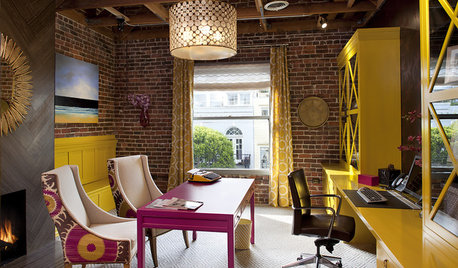
DECORATING GUIDESCalifornia Law: License to Practice Interior Design?
By Houzz
A proposed bill that would require a license to practice interior design in California has Houzzers talking. Where do you stand?
Full Story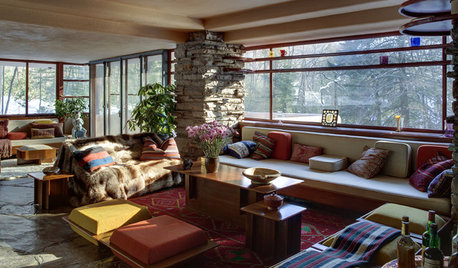
WINDOWSSteel-Framed Windows Leap Forward Into Modern Designs
With a mild-mannered profile but super strength, steel-framed windows are champions of design freedom
Full Story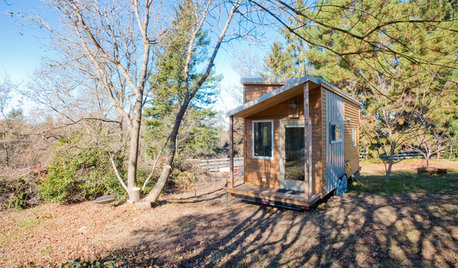
SMALL HOMESHouzz Tour: Rolling With Simplicity in a Tiny House on Wheels
Just 240 square feet, this California home encourages efficient living — but there’s still room for yoga
Full Story
LANDSCAPE DESIGNIs It Time to Consider Fake Grass?
With more realistic-looking options than ever, synthetic turf can be a boon. Find the benefits and an installation how-to here
Full Story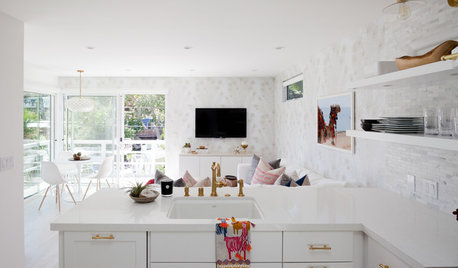
DECORATING GUIDESA Mobile Home Gets a Bohemian-Chic Makeover
By Becky Harris
Designer infuses world traveler’s guesthouse with tribal textiles, Moroccan tiles and kilim rugs
Full Story
CURB APPEAL7 Ways to Create a Neighborly Front Yard
Foster community spirit by setting up your front porch, paths and yard for social interaction
Full Story
BEFORE AND AFTERSSee 6 Yards Transformed by Losing Their Lawns
Wondering whether a turf lawn is the best use of your outdoor space? These homeowners did, and they found creative alternatives
Full Story
PETS6 Ways to Help Your Dog and Landscape Play Nicely Together
Keep your prized plantings intact and your dog happy too, with this wisdom from an expert gardener and dog guardian
Full Story
FURNITUREViva Brazil and Its Modernist Furniture!
As the Olympic Games approach, we salute the host country’s overlooked midcentury designers and some of their striking chairs
Full Story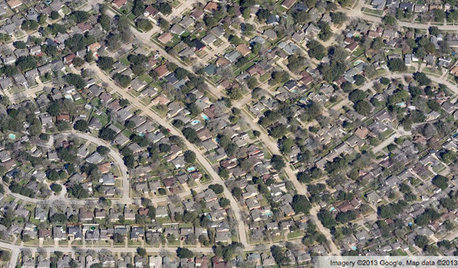
COMMUNITYGet a Bird's-Eye View of America's Housing Patterns
By John Hill
See the big picture of how suburban developments are changing the country's landscape, with aerial photos and ideas for the future
Full Story





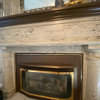
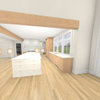


Landa Design